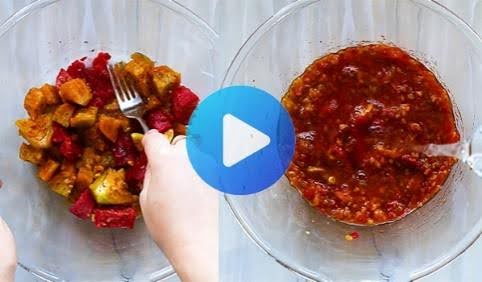Starting your day with a smoothie sounds like a healthy choice, right? It can be. But not all smoothies are created equal, especially when your goal is losing weight. I’ve seen many people accidentally turn their healthy morning drink into a sugar bomb that actually works against their goals. The good news is, with a little know-how, you can make your morning smoothie a powerful tool in your weight loss journey.
Why Smoothies Can Be Great for Losing Weight
Let’s talk about why smoothies can be fantastic for shedding pounds.
1. Nutrient Powerhouses:
When made correctly, smoothies pack a ton of nutrients into one easy glass. You can blend fruits, vegetables, protein sources, and healthy fats together. This means you get vitamins, minerals, fiber, and protein all at once. Getting enough nutrients is super important when you’re cutting back on calories. Your body needs these goodies to work properly, keep your energy up, and support muscle health, which is key for burning fat. Think about trying to eat a big salad, a piece of chicken, and some nuts all before 9 AM. It’s tough. A smoothie makes it simple.
2. Feeling Full and Satisfied:
A big reason people struggle with weight loss is hunger. If you’re always feeling hungry, it’s hard to stick to your plan. Smoothies, especially those high in protein and fiber, can help you feel full for longer. Protein takes longer to digest than carbs, and fiber adds bulk to your stomach. This combo sends signals to your brain saying, “Hey, we’re full here.” This can stop you from reaching for unhealthy snacks mid-morning. I often find that a well-balanced smoothie keeps me satisfied right up until lunchtime.
3. Controlling Your Calories:
When you make your own smoothie, you are in complete control of what goes in it. This makes tracking calories much easier compared to grabbing something on the go or eating processed foods with hidden ingredients. You measure the fruits, veggies, protein powder, and liquids. You know exactly what you’re consuming. This control is vital for creating the calorie deficit needed for weight loss – that means burning more calories than you eat.
4. Quick and Easy:
Let’s be real, mornings can be hectic. Finding time for a balanced breakfast isn’t always easy. Smoothies are super quick to make. Toss your ingredients in the blender, whiz it up, and you’re good to go. You can even prep ingredients the night before by chopping fruits or portioning out powders. This convenience makes it much more likely you’ll stick to a healthy breakfast routine instead of skipping it or grabbing a sugary pastry.
5. Hydration Helper:
Smoothies have a liquid base, usually water, milk, or a milk alternative. This contributes to your daily hydration needs. Staying hydrated is surprisingly important for weight loss. It helps your metabolism run smoothly, can help you feel full, and keeps your body systems working right. Sometimes, we even mistake thirst for hunger.
Building Your Perfect Weight Loss Smoothie
Okay, so how do you make a smoothie that actually helps you lose weight? It’s all about the right ingredients in the right amounts. Think of it like building with blocks.
Block 1: The Liquid Base (Choose Wisely)
This is the foundation. Avoid fruit juices, even 100% juice, as they are packed with sugar and lack fiber. Sweetened milks or yogurts can also add unnecessary sugar and calories.
- Good Choices: Water (zero calories), unsweetened almond milk, unsweetened cashew milk, unsweetened soy milk, or even green tea (cooled). These are low in calories and won’t spike your blood sugar. Aim for about 1 cup (8 ounces).
Block 2: Protein Power (Super Important)
Protein is your best friend for weight loss smoothies. It keeps you full, helps maintain muscle mass while you lose fat, and requires more energy (calories) to digest than fats or carbs.
- Good Choices:
- Protein Powder: Whey, casein, soy, pea, rice, or hemp protein powders are great. Look for ones low in sugar and carbs. Aim for 20-30 grams of protein per smoothie (usually one scoop, but check the label).
- Greek Yogurt: Plain, unsweetened Greek yogurt is packed with protein. Use about 1/2 to 3/4 cup.
- Cottage Cheese: Another protein star. Use about 1/2 cup. It makes smoothies creamy.
- Tofu: Silken tofu blends well and adds plant-based protein. Use about 1/2 cup.
Block 3: Fiber-Rich Veggies (Load ‘Em Up)
Vegetables add volume, fiber, vitamins, and minerals without adding many calories or sugar. You might think veggies in a smoothie sound weird, but trust me, you often can’t even taste them, especially leafy greens.
- Good Choices:
- Leafy Greens: Spinach, kale, romaine lettuce. Start with a big handful. Spinach has a very mild taste.
- Other Veggies: Cucumber, celery, zucchini (raw), cauliflower (steamed and frozen works great for creaminess), carrots, beets (use sparingly, can be sweet). Start with about 1/2 cup chopped.
Block 4: Fruit (Use in Moderation)
Fruit adds natural sweetness, vitamins, and some fiber. But fruit also contains natural sugars (fructose), which means calories. Too much fruit can turn your smoothie into a sugar rush. Stick to lower-sugar fruits and control your portions.
- Good Choices:
- Berries: Strawberries, blueberries, raspberries, blackberries are lower in sugar and high in antioxidants. Use 1/2 to 1 cup (frozen berries make the smoothie cold and thick).
- Other Fruits: Half a banana (adds creaminess), 1/4 avocado (adds healthy fats and creaminess), a few chunks of mango or pineapple (use sparingly due to higher sugar).
- Portion Control: Aim for no more than 1 cup of fruit total, leaning towards lower-sugar options like berries.
Block 5: Healthy Fats (For Staying Power)
A small amount of healthy fat adds creaminess and helps you feel satisfied for even longer. Fats also help your body absorb certain vitamins.
- Good Choices:
- Avocado: 1/4 of an avocado.
- Nuts and Seeds: 1 tablespoon of chia seeds, flax seeds, hemp seeds, almond butter, peanut butter (choose natural, no-sugar-added versions), or a small handful of walnuts. Seeds like chia and flax also add extra fiber.
- Portion Control: Fats are calorie-dense, so stick to one serving. Don’t add avocado and nut butter and seeds – pick one or maybe two in smaller amounts.
Block 6: Flavor Boosters (Optional & Sugar-Free)
If you want extra flavor without extra sugar:
- Good Choices: Cinnamon, nutmeg, unsweetened cocoa powder, vanilla extract, mint leaves, ginger, lemon or lime juice.
Putting It All Together (Example):
- 1 cup unsweetened almond milk
- 1 scoop vanilla whey protein powder (approx. 25g protein)
- 1 large handful fresh spinach
- 1/2 cup frozen mixed berries
- 1 tablespoon chia seeds
- Dash of cinnamon
Blend until smooth. This combination provides protein, fiber, healthy fats, vitamins, and minerals without overloading on sugar or calories.
Common Smoothie Mistakes That Hurt Weight Loss
It’s easy to go wrong. Here are some pitfalls I see people fall into:
1. Sugar Overload:
This is the biggest mistake. Using fruit juice as a base, adding sweetened yogurt, piling in high-sugar fruits (like tons of mango, pineapple, and banana), or adding honey, maple syrup, or agave nectar can send the sugar content through the roof. This causes a blood sugar spike and crash, leading to more cravings and fat storage.
- Fix: Stick to unsweetened liquids, plain yogurt, measure your fruit (especially high-sugar ones), and use sugar-free flavor boosters. Read labels on protein powders and nut butters.
2. Calorie Bomb:
While using healthy ingredients is good, too much of a good thing can lead to weight gain. Loading up on nut butter, seeds, avocado, coconut oil, and lots of fruit can make your smoothie have more calories than a full meal.
You Might Be Interested In: Learning more about The Complete Smoothie Detox & Weight Loss Program
- Fix: Measure your ingredients, especially calorie-dense ones like fats and fruits. Be mindful of portion sizes. A weight loss smoothie should generally be between 300-450 calories, depending on your individual needs.
3. Not Enough Protein:
A smoothie made mostly of fruit and a liquid base digests quickly, leaving you hungry soon after. Protein is key for satiety.
- Fix: Always include a good protein source – protein powder, Greek yogurt, cottage cheese, or tofu. Aim for at least 20 grams.
4. Not Enough Fiber:
Fiber comes from fruits, vegetables, nuts, and seeds. If your smoothie is just protein powder, milk, and maybe half a banana, it might lack the fiber needed to keep you full and support healthy digestion.
- Fix: Add leafy greens, other veggies (like cauliflower or zucchini), chia seeds, flax seeds, or keep the skin on fruits like apples (if your blender can handle it).
5. Drinking It Too Fast:
Smoothies are easy to gulp down quickly. However, drinking too fast doesn’t give your stomach and brain time to register fullness. Chewing food sends signals that help with satiety, and you miss that with a purely liquid meal.
- Fix: Sip your smoothie slowly. Take 15-20 minutes to drink it, just like you would eat a regular meal. Some people even find eating it with a spoon helps. You can also make your smoothie thicker (use less liquid, more frozen fruit/ice, or add chia seeds) to slow you down.
6. Using Smoothies as Snacks (Instead of Meals):
A well-built smoothie can be a meal replacement. But if you have a 400-calorie smoothie in addition to your regular breakfast or as a mid-afternoon “snack,” you’re just adding extra calories to your day.
- Fix: Decide if your smoothie is replacing a meal (like breakfast or lunch) or if it’s a snack. If it’s a snack, make it much smaller and lower in calories (around 150-200 calories), focusing on protein and fiber.
7. Relying Only on Smoothies:
Smoothies can be part of a healthy diet, but they shouldn’t be your only food. Whole foods offer different textures and require chewing, which aids digestion and satisfaction. A diet solely based on liquids isn’t sustainable or balanced long-term.
- Fix: Incorporate smoothies as one meal or snack within a balanced diet rich in whole fruits, vegetables, lean proteins, and whole grains.
Smoothies and Your Hormones (For the Ladies)
As women, our bodies and hormones have unique needs, and this can influence weight loss. Making smoothies work for us means considering these factors.
Blood Sugar Balance: Hormonal fluctuations, especially around our cycles, perimenopause, or conditions like PCOS (Polycystic Ovary Syndrome), can make us more sensitive to blood sugar swings. A high-sugar smoothie can worsen these swings, leading to energy crashes, cravings (especially for carbs and sugar), and potentially contributing to insulin resistance over time. Insulin resistance makes it harder for the body to lose weight, particularly around the belly area.
- Smoothie Strategy: Prioritize protein, fiber, and healthy fats in every smoothie. Limit fruit to low-glycemic options like berries. Avoid added sugars completely. This helps keep blood sugar stable, supporting hormonal balance and reducing cravings. Adding cinnamon can also help with blood sugar control.
Thyroid Health: The thyroid gland regulates metabolism. Certain raw cruciferous vegetables (like kale and cabbage) contain goitrogens, compounds that in very large amounts might interfere with thyroid function in people with existing thyroid issues. While cooking usually reduces goitrogens, they are present in raw greens often used in smoothies.
- Smoothie Strategy: If you have a known thyroid condition, you might want to lightly steam greens like kale before adding them to your smoothie or rotate your greens. Don’t use huge amounts of raw kale every single day. Spinach, romaine, and other leafy greens are generally lower in goitrogens. Including ingredients rich in selenium (like a Brazil nut – just one.) and iodine (like a sprinkle of seaweed flakes, if appropriate for you) can support thyroid health, but always talk to your doctor about supplements or major dietary changes if you have thyroid concerns.
Nutrient Needs: Women have specific nutrient needs that can be supported through smoothies.
- Iron: Many women, especially pre-menopause, are low in iron, leading to fatigue which can derail exercise plans. Pairing vitamin C-rich fruits (like berries or a small amount of orange) with plant-based iron sources like spinach or chia seeds in your smoothie can help boost iron absorption.
- Calcium and Vitamin D: Important for bone health, especially as we age. Use fortified unsweetened plant milk or dairy milk/Greek yogurt as your base. Some protein powders are also fortified.
- Folate: Crucial during childbearing years. Leafy greens like spinach are packed with folate.
Stress Hormones (Cortisol): Chronic stress raises cortisol levels, which can encourage fat storage (especially abdominal fat) and increase cravings. Starting your day with a frantic rush and maybe skipping breakfast or grabbing something sugary can worsen this.
- Smoothie Strategy: Making a balanced smoothie part of a calm morning routine can actually help manage stress. It ensures you’re nourished, stabilizes blood sugar, and prevents the energy crashes that can increase irritability and stress feelings. Taking 5 minutes to sit and sip peacefully can make a difference.
Fiber for Estrogen Balance: Fiber plays a role in helping the body eliminate excess estrogen through digestion. Hormonal imbalances, including estrogen dominance, can sometimes contribute to weight gain or difficulty losing weight.
- Smoothie Strategy: Including plenty of fiber from veggies, chia seeds, flax seeds, and low-sugar fruits supports healthy digestion and this natural detoxification process.
Beyond the Blend: Smoothies in Your Overall Weight Loss Plan
A smoothie is just one piece of the puzzle. For successful, sustainable weight loss, you need a bigger picture approach.
1. Whole Foods are Key:
Don’t rely solely on smoothies. Your body benefits from the variety and chewing satisfaction of whole foods. Focus on meals that include lean proteins (chicken, fish, beans, lentils), lots of non-starchy vegetables (broccoli, peppers, salad greens), whole grains (quinoa, oats, brown rice), and healthy fats (avocado, nuts, olive oil) in their solid form. Smoothies can replace one meal, but the rest of your day should feature whole foods.
2. Calorie Deficit is Non-Negotiable:
Weight loss happens when you consistently burn more calories than you consume. Even the healthiest smoothie won’t lead to weight loss if your total daily calorie intake is too high. Track your food intake (at least initially) to understand how many calories you’re consuming from all sources, including your smoothie. Use an online calculator or app to estimate your daily calorie needs for weight loss based on your age, sex, weight, height, and activity level.
3. Move Your Body:
Exercise is crucial. It burns calories, builds metabolism-boosting muscle, improves insulin sensitivity, reduces stress, and shapes your body. Aim for a combination of:
- Cardio: Activities like brisk walking, jogging, cycling, swimming, or dancing help burn calories. Aim for at least 150 minutes of moderate-intensity cardio per week.
- Strength Training: Lifting weights, using resistance bands, or doing bodyweight exercises (like squats, lunges, push-ups) builds muscle. More muscle means you burn more calories even at rest. Aim for at least two full-body strength sessions per week.
4. Hydration Matters:
Drink plenty of water throughout the day, not just in your smoothie. Water helps with metabolism, fullness, and overall bodily functions. Aim for around 8 glasses (64 ounces) or more, depending on your activity level and climate.
5. Sleep is Essential:
Lack of sleep messes with hunger hormones (ghrelin and leptin), increases cortisol, and can lead to cravings for high-calorie foods. Aim for 7-9 hours of quality sleep per night. A balanced smoothie might help stabilize blood sugar overnight if had earlier in the day, potentially contributing to better sleep compared to a high-sugar dinner or snack.
6. Manage Stress:
As mentioned, chronic stress hinders weight loss. Find healthy ways to cope with stress, such as exercise, meditation, deep breathing, yoga, spending time in nature, or hobbies you enjoy.
7. Be Patient and Consistent:
Healthy weight loss is a marathon, not a sprint. Aim for a sustainable loss of 1-2 pounds per week. There will be ups and downs. Focus on building healthy habits, like incorporating balanced smoothies, eating whole foods, and exercising regularly. Consistency over time is what brings results. Don’t get discouraged by slow progress; celebrate the healthy changes you’re making.
Making your morning smoothie a weight-loss ally is totally doable. By focusing on protein, fiber, healthy fats, and nutrient-dense veggies while controlling sugar and overall calories, you turn a simple drink into a powerful tool. Remember it’s part of a bigger picture that includes whole foods, exercise, sleep, and stress management. Cheers to blending your way to a healthier you.
Related YouTube Video
Final Thoughts
Creating the right smoothie is about balance. It’s easy to make mistakes, like adding too much sugar or too many high-calorie fats. But when you focus on the key building blocks – a low-calorie liquid base, plenty of protein, lots of fiber from veggies and seeds, a controlled amount of low-sugar fruit, and a touch of healthy fat – your smoothie becomes a fantastic way to start your day. It can keep you full, provide essential nutrients, and support your weight loss goals, especially when combined with an overall healthy lifestyle. Think of it as one delicious step in your journey toward feeling your best. Remember to listen to your body, adjust ingredients based on your needs and preferences, and enjoy the process.







